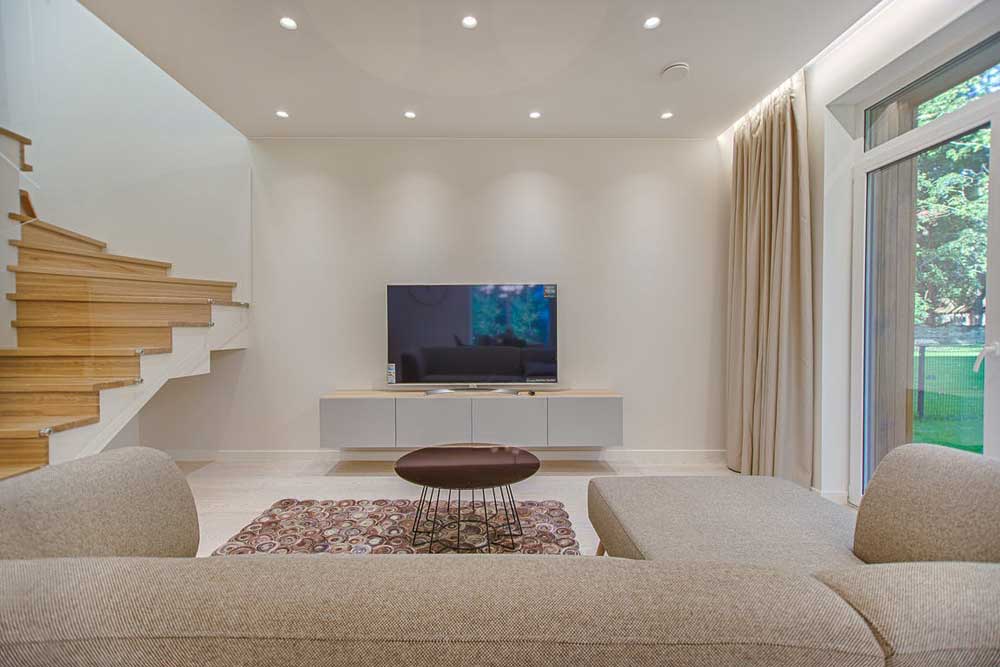Since the living room is where the family spends most of its time, it has the highest decorative value in the house. It’s where crucial meetings and talks are frequently held, as well as where a homeowner may relax with their coffee on a peaceful afternoon. A contemporary living room is incomplete in a house without a TV and a TV set, the major entertainment source. It attracts individuals of all ages, having the proper furnishings for such an entertainment service.
A TV unit is a must-have piece of furniture in any home in today’s world. They currently come in various styles ranging from elegant and traditional to minimalist and serve a purpose more than merely storing your television. It may also store and show other objects such as books, CDs, gaming consoles, and home décor. For a first-time buyer, the sheer range of TV stands available on the market might be overwhelming. So, first, consider why you require a television unit. Is it to hide those ugly cables and make sure everything has a place to go? Is it to add some storage and display to your room, or is it to add some storage and display to your room?
So, to make things easier for you, here is a guide to finding a suitable TV stand for your home.
Measure Your Television
After you’ve decided on what you need in terms of functionality, the next item to think about is the television itself. A flat-screen TV will be styled and positioned differently from a smaller screen. Because televisions come in various shapes and sizes, you’ll need to familiarize yourself with yours before selecting a TV unit that, for example, lacks sufficient back clearance or isn’t long enough to suit your TV’s width.
Measure your television’s height, breadth, and depth since these three measurements will influence the size and design of these entertainment units you choose. These considerations are essential to understand and plan for before purchasing an entertainment unit truly.
Choose a Comfortable Viewing Height
Since craning your neck at odd angles for hours is inconvenient, the TV stand must place the screen at eye level. The ideal TV height is 42 inches; however, the optimal position is determined by the height of your sofa or chairs. When sitting, measure your eye level to ensure the center part of the TV isn’t too much over your line of vision. Consider investing in a TV stand with a mount that allows you to alter the display’s height as needed.
How Big Is Your Room?
The size of your television set should be proportional to the size of your room. Use bold, imposing items for bigger spaces, while smaller spaces should have minimalistic styles. If your TV set is against a certain wall or niche, be careful to acquire precise dimensions before purchasing.
Working with a tiny or oddly shaped space does not mean you must forego your ideal television. When the available area for your TV doesn’t easily match up with your seating, choose a swivel TV stand to discover your best viewing angle. A corner TV stand allows you to cram a large display into a small space, but a wall-mounted TV stand will enable you to move around more freely or entertain guests. A wall console is beneficial for adding storage space to the room, even if you mount the TV without a stand.
Be Sure about the Storage Needs
This is crucial information for a homeowner to understand before purchasing a TV cabinet design. It establishes the number of drawers, shelves, and storage areas required just for the control equipment housed within the TV cabinet. A TV without a gaming controller unit or a sound system, for example, will demand less storage space than a TV with a game controller unit and a sound system connected.
Choose a Style
Staggered shelves, rounded bases, and asymmetrical designs are just a few of the aesthetic components offered on TV stands. Stick with TV consoles that complement your present appearance rather than mixing and matching styles. Simple geometric lines and exposed shelves capture the minimalist atmosphere of a contemporary environment. To make the space look brighter and bigger, choose neutral colors like white or light gray. The transitional decor has dark solids and crisp lines, while richly stained woods, larger frames, and ornate accents add to the elegance of many traditional interiors.
Pick the Right Material
Wood, metal, glass, particleboard, and medium-density fiberboard are the five most frequent materials used to make TV stands. Although somewhat heavy, wood TV stands tend to stay put when children or dogs rush by. While many glass TV stands are sturdy and have metal supports to increase their stability, you should keep them out of high-traffic areas, especially if you want them to remain crack-free and clean. Particleboards and medium-density fiberboard are less expensive alternatives to wood; thus, they have a shorter lifespan but are still tough enough to withstand everyday usage.
Need Something Customized?
You might not be able to find a suitable wall space or location for your TV set. There’s a good chance you won’t discover something you adore or that meets all of your needs. Adjust it according to your preferences with a customized tv stand in some circumstances. With so many options, you’re likely to discover an entertainment center that suits your current décor or has a look you adore so much that you’re prepared to build your entire house around it! It’s all a matter of personal preference.
Conclusion
It’s critical to understand how to choose the best TV stands for the entertainment system you’ve placed in your home. The TV stand is as varied as the entertainment units themselves and is frequently highly configurable with added storage. They are the primary entertainment devices in today’s world and serve as a key decorative piece in any home’s living room. So, keep the seven factors in mind when opting for an excellent TV stand for your abode.

